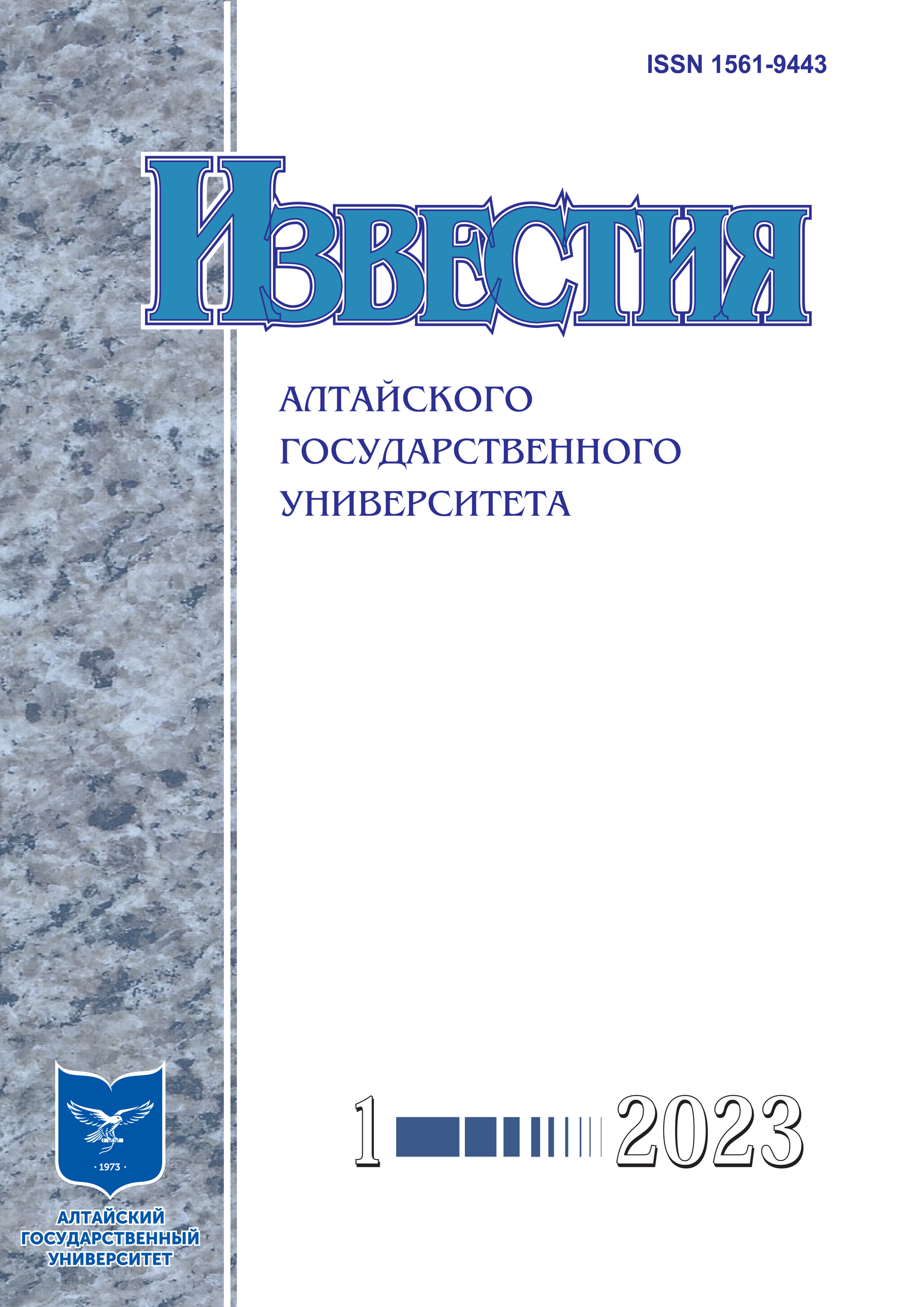Structure Formation Processes During Explosive Welding of Copper and Molybdenum: A Research Study
УДК 539.388: 620.22:621.7
Abstract
The present study investigates samples of Cu-Mo composite material produced through explosive welding. The microhardness of these samples is measured and their structures are analyzed using optical and electron microscopy methods. Copper and molybdenum regions are mapped at the Cu-Mo boundary. The analysis reveals a complex fractal line and dark areas at this boundary, indicating the formation of a new phase.
Microhardness measurements indicate that the hardness of both copper and molybdenum increases in comparison to standard values for annealed samples of copper and molybdenum, respectively. Furthermore, the hardness of molybdenum increases at the interface with copper, which may also suggest the formation of a new phase.
The electron microscopy analysis and mapping of copper and molybdenum regions at the Cu-Mo interface confirm the presence of a new phase, which is referred to as "forced eutectic." This is because copper and molybdenum do not typically form solid solutions, eutectics, or intermetallic compounds under equilibrium conditions. The new phase exists only under nonequilibrium conditions.
Downloads
Metrics
References
Пиатти Дж. Достижения в области композиционных материалов. М., 1982.
Gorbatyuk S., Pashkov A., Chichenev N. Improved Cop-per-Molybdenum Composite Material Production Technology // Materials Today Proceedings. 2019. Vol. 11. https://doi. org/10.1016/j.matpr.2018.12.102.
Munagala S. Ch., Ajit K. N., Navya K., Tapas L, Siddhartha R.. (2022) Review on developments of bulk functionally graded composite materials // International Materials. Reviews. 67:8. https://doi.org/10.1179/1432891715Z.0000000001366.
Кербер М.Л. Композиционные материалы // Соро-совский образовательный журнал РХТУ им. Д. И. Менделеева. 1999. № 5.
Разумов И.К, Ермаков А.Е, Горностырев Ю.Н, Стра-умал Б.Б. Неравновесные фазовые превращения в сплавах при интенсивной пластической деформации // УФН. 2020. DOI: 10.3367/UFNr.2019.10.038671.
Mali V.I., Pavliukova D.V., Bataev I.A., Bataev A.A., Smirnov A.A., Yrtsev P.S., Bazarkina V.V. Formation of the in-termetallic layers in Ti-Al multilayer composites // Advanced Materials Research. 2011. Vol. 311-313.
Дерибас А.А. Физика упрочнения и сварки взрывом ; 2-е изд., доп. и перераб. Новосибирск, 1980.
Федер Е., Фракталы. М., 1991.
Takacs L. Mechanochemistry and the other branches of chemistry: Similarities and differences, INCOME. 2011.
Copyright (c) 2023 Павел Олегович Шалаев, Людмила Иосифовна Квеглис , Федор Михайлович Носков , Тимур Владимирович Фадеев

This work is licensed under a Creative Commons Attribution 4.0 International License.
Izvestiya of Altai State University is a golden publisher, as we allow self-archiving, but most importantly we are fully transparent about your rights.
Authors may present and discuss their findings ahead of publication: at biological or scientific conferences, on preprint servers, in public databases, and in blogs, wikis, tweets, and other informal communication channels.
Izvestiya of Altai State University allows authors to deposit manuscripts (currently under review or those for intended submission to Izvestiya of Altai State University) in non-commercial, pre-print servers such as ArXiv.
Authors who publish with this journal agree to the following terms:
- Authors retain copyright and grant the journal right of first publication with the work simultaneously licensed under a Creative Commons Attribution License (CC BY 4.0) that allows others to share the work with an acknowledgement of the work's authorship and initial publication in this journal.
- Authors are able to enter into separate, additional contractual arrangements for the non-exclusive distribution of the journal's published version of the work (e.g., post it to an institutional repository or publish it in a book), with an acknowledgement of its initial publication in this journal.
- Authors are permitted and encouraged to post their work online (e.g., in institutional repositories or on their website) prior to and during the submission process, as it can lead to productive exchanges, as well as earlier and greater citation of published work (See The Effect of Open Access).








